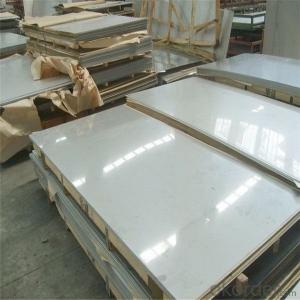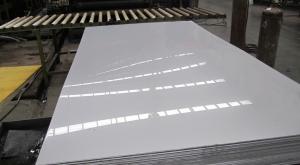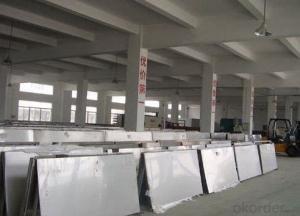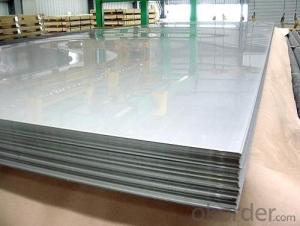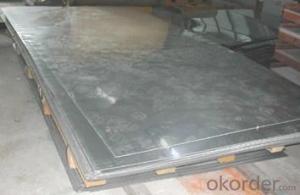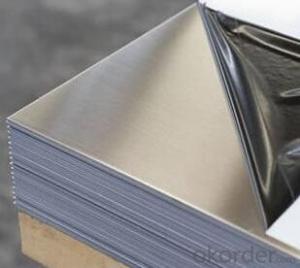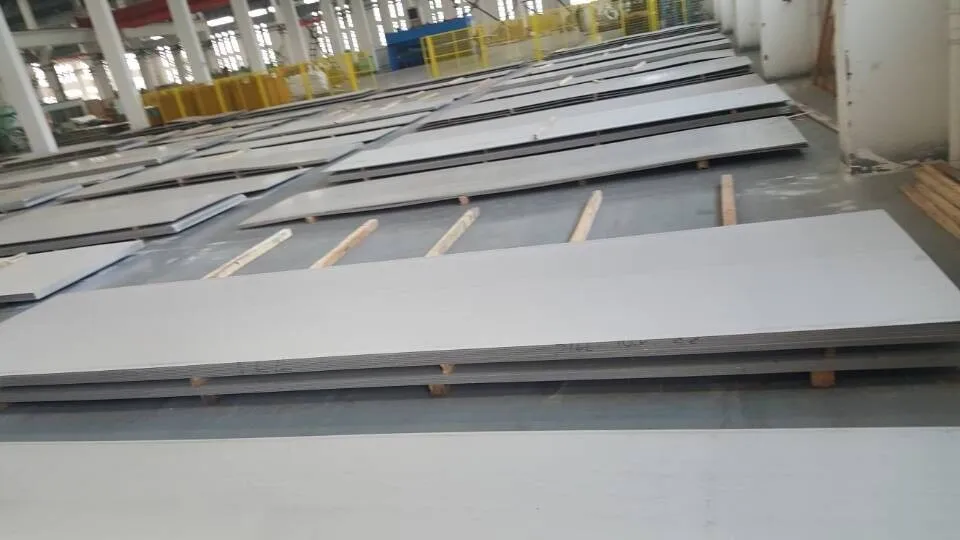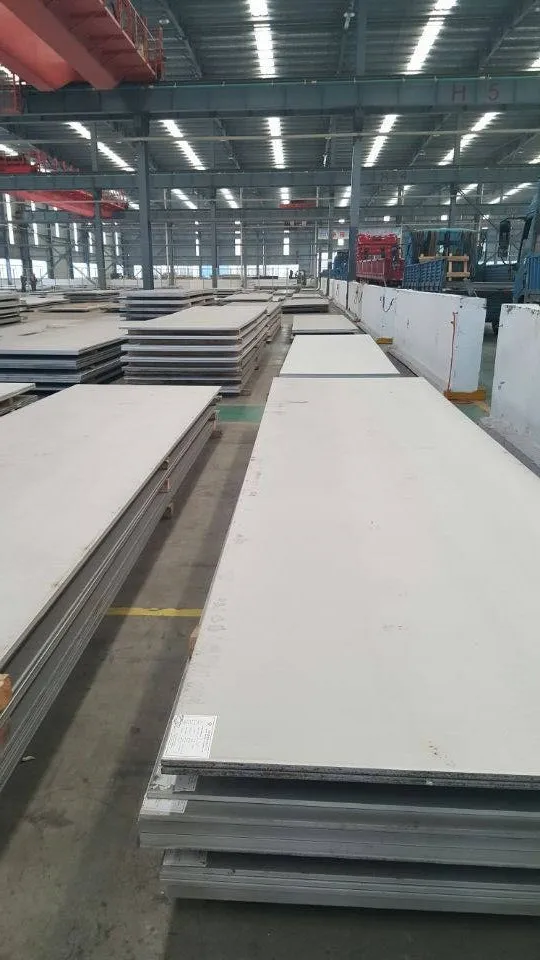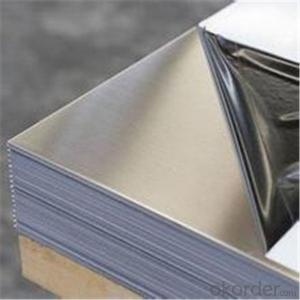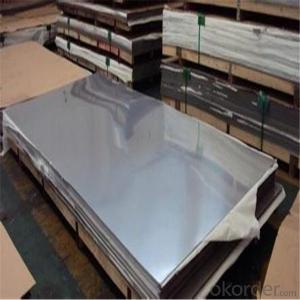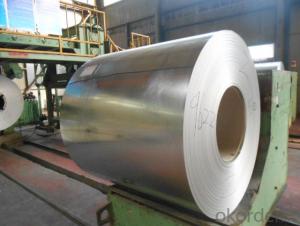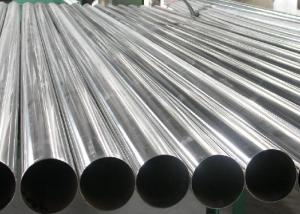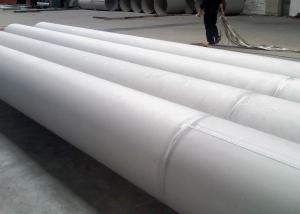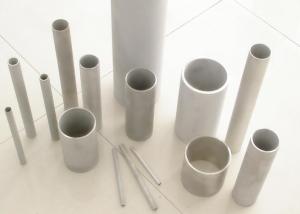Stainless Steel Plate 2205 2507 2520 duplex
- Loading Port:
- Shanghai
- Payment Terms:
- TT OR LC
- Min Order Qty:
- 4 m.t.
- Supply Capability:
- 20000 m.t./month
OKorder Service Pledge
OKorder Financial Service
You Might Also Like
Specification
2205 2507 2520 duplex stainless steel plate
We are a professional manufacturer of stainless steel sheet. According to ASTM, JIS and AISI,GB, standards, Jaway steel enhances effectiveness and of quality control from selecting the raw materials, cutting, slitting, shearing, surface treatment, packing, exporting of the existing products.
Product Description
Product Name | Mill test certificate 2205 2507 2520 duplex stainless steel plate |
Material | stainless steel |
Color | natural color or as require |
Standard | AISI ASTM JIS SUS and GB |
Grade | 201/304/304L/321/316/316L/309/309S/310S/904L/2205/2507/2520 |
Packing | Seaworthy wooden pallet or according to client's requirement |
Thickness tolerance | +/- 0.25% |
Delivery time | Within 7-15days after getting your deposit. |
Advantages | Strong corrosion and decorative effect |
Mill | TISCO, ZPSS, BAO STEEL, POSCO ,LZ ,etc. |
Products Show
These are the normal items, for the special requirements,we can also meet.
Surface finish | Characteristics and application |
NO.2B | The surface brightness and flatness of no2B is better than no2D. then through a special surface treatment to improve its mechanical properties,No2B could nearly satisfy comprehensive uses. |
NO.3 | Polished with abrasive belt of git#100-#200, have better brightness with discontinuous coarse stria, used as inner and external ornaments for building, electrical appliances and kitchen utensils etc. |
NO.4 | Polished with abrasive belt of grit #150-#180,have better brightness with discontinuous coarse stria,but thinner than No3, are used as bathtub buildings inner and external ornaments electrical appliances kitchen utensils and food processing equipment etc. |
HL | Polished with abrasive belt of grit #150-#320 on the NO.4 finish and has continuous streaks, mainly used as buildings ornaments elevators,door of building, frontal plate etc. |
BA | Cold rolled, bright annealed and skin-passed, the product have excellent brightness and good reflexivity like mirror,kitchen apparatus,ornament etc. |
8K | The product have excellent brightness and prefer reflexivity can to be the mirror. |
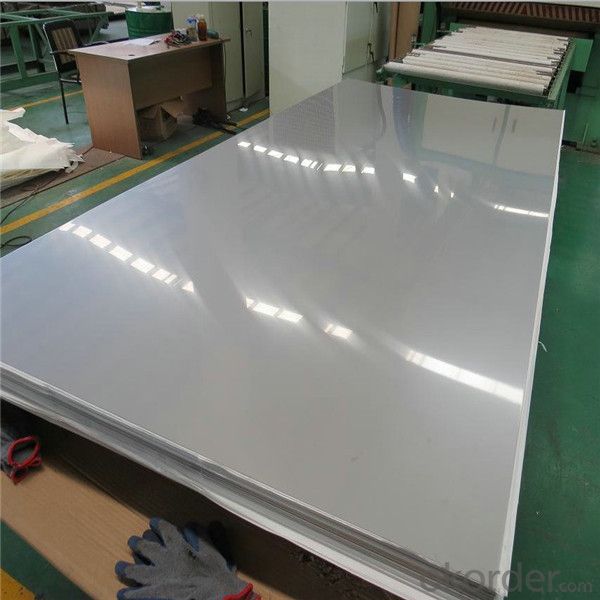
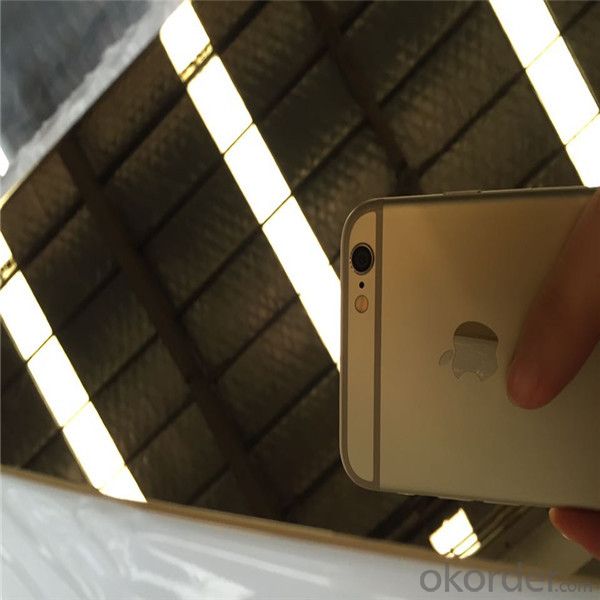
Our Advantages
• All products are made of high-quality imported raw materials.
• Our products are certified by ISO9001:2008 authentication quality systems.
• we are nominated as the AAA enterprise by Jiangsu government.
• Quick Response to Your Enquiry.
- Q: Are stainless steel sheets good for pressure piping?
- Yes, stainless steel sheets are excellent for pressure piping due to their high strength, corrosion resistance, and ability to withstand extreme temperatures.
- Q: How do you prevent fingerprints or smudges on stainless steel sheets?
- There are several effective measures you can take to prevent fingerprints or smudges on stainless steel sheets: 1. Regularly wipe down the stainless steel surface with a soft microfiber cloth. Microfiber is great at attracting and trapping dirt, dust, and oils without leaving streaks or smudges. 2. Use warm soapy water to gently clean the stainless steel surface. Mix a small amount of mild dish soap with warm water, then rinse thoroughly and dry with a clean towel. This method effectively removes grease, fingerprints, and smudges. 3. Consider investing in stainless steel cleaners that are specifically formulated to remove fingerprints and smudges. Follow the instructions on the product for best results. 4. Apply a stainless steel protective coating or sealant to create a thin, invisible barrier that repels fingerprints and smudges. Follow the manufacturer's instructions for application and reapply as needed. 5. Avoid using abrasive cleaners, scrub brushes, steel wool, or harsh chemicals that can damage the protective layer of stainless steel. Stick to non-abrasive cleaning methods and tools to maintain the integrity of the surface. 6. Handle stainless steel sheets with care by using clean hands or wearing gloves to prevent the transfer of oils or dirt. Avoid dragging objects across the surface, as this can cause scratches and make it more susceptible to smudging. By incorporating these measures into your cleaning routine and handling practices, you can effectively minimize fingerprints and smudges on your stainless steel sheets, keeping them clean and pristine.
- Q: Are stainless steel sheets heat-resistant?
- Yes, stainless steel sheets are heat-resistant.
- Q: What is the density of stainless steel sheets?
- The density of stainless steel sheets can vary depending on the specific grade and thickness of the sheet. However, on average, stainless steel sheets have a density of about 8,000 kilograms per cubic meter (kg/m³) or 8 grams per cubic centimeter (g/cm³). This high density is one of the reasons why stainless steel is known for its strength and durability.
- Q: What are the standard sizes and thicknesses of stainless steel sheets?
- Stainless steel sheets come in various standard sizes and thicknesses that are widely used in different industries and applications. The standard sizes typically range from 4 feet by 8 feet to 5 feet by 10 feet, although custom sizes can also be obtained based on specific requirements. Regarding thicknesses, stainless steel sheets are available in several standard options, including 20 gauge (0.036 inches), 18 gauge (0.048 inches), 16 gauge (0.060 inches), 14 gauge (0.075 inches), 12 gauge (0.105 inches), and 10 gauge (0.135 inches). These thicknesses refer to the nominal thickness, and actual thickness may vary slightly. It is important to note that stainless steel sheets can also be obtained in metric sizes, with common thicknesses ranging from 0.5 mm to 3 mm. This allows for flexibility and compatibility with international standards and specifications. Overall, the standard sizes and thicknesses of stainless steel sheets are determined by industry standards and customer requirements, ensuring wide availability and versatility for various applications such as construction, automotive, aerospace, and kitchen equipment manufacturing, among others.
- Q: What are the benefits of using mirror-finish stainless steel sheets?
- Mirror-finish stainless steel sheets offer numerous advantages in various applications. Firstly, their mirror-like surface adds elegance and style to any space, whether it be in interior design, architecture, or decorative pieces. The reflective nature of the mirror finish enhances the overall aesthetic appeal. Furthermore, these sheets are exceptionally durable and long-lasting. The high-quality stainless steel material used in their production ensures resistance to corrosion, rust, and staining, making them suitable for both indoor and outdoor use. This quality also makes them easy to clean and maintain, saving time and effort in upkeep. In addition, mirror-finish stainless steel sheets have the ability to reflect light, making them ideal for spaces that require enhanced lighting or where light distribution is important. The reflective surface helps brighten up the environment, making it perfect for areas such as kitchens, bathrooms, and commercial spaces. Moreover, these sheets are highly versatile and can be used in a wide range of applications. From kitchen countertops and backsplashes to wall claddings, elevator interiors, and even custom-made furniture, their versatility allows for creative and unique designs in various industries. Furthermore, mirror-finish stainless steel sheets have excellent heat resistance properties, making them suitable for applications involving high temperatures. This feature makes them a popular choice in commercial kitchens, industrial settings, and other environments where heat exposure is a concern. Lastly, mirror-finish stainless steel sheets are an environmentally friendly option. Stainless steel is highly recyclable, and using mirror-finish sheets promotes sustainability by reducing the need for new materials. This aligns with the growing emphasis on eco-friendly practices and the desire to reduce the carbon footprint. In conclusion, the advantages of mirror-finish stainless steel sheets include their elegant appearance, durability, light reflection capabilities, versatility, heat resistance, and eco-friendliness. These qualities make them a desirable choice for various applications, providing both aesthetic appeal and functional advantages.
- Q: How do you prevent galvanic corrosion when using stainless steel sheets?
- To prevent galvanic corrosion when using stainless steel sheets, there are several measures you can take: 1. Avoid direct contact with dissimilar metals: Galvanic corrosion occurs when two different metals come into contact in the presence of an electrolyte, such as moisture. To prevent this, ensure stainless steel sheets are not in direct contact with dissimilar metals, especially those with a higher anodic index, such as aluminum or copper. If contact is unavoidable, use insulating materials like plastic or rubber gaskets to separate the metals. 2. Select compatible fasteners: When fastening stainless steel sheets, it is crucial to choose fasteners made from the same or compatible metals. Using dissimilar metals can create galvanic cells, leading to corrosion. Stainless steel fasteners or those made from materials with similar corrosion resistance, like galvanized steel, are recommended. 3. Use protective coatings: Applying protective coatings to stainless steel sheets can provide an additional barrier against galvanic corrosion. Consider using paint, epoxy, or other appropriate coatings that are compatible with stainless steel. These coatings act as a sacrificial layer, preventing direct contact between the stainless steel and the surrounding environment. 4. Insulate electrical connections: If stainless steel sheets are involved in electrical systems, ensure proper insulation of electrical connections. This prevents the flow of electrical current between dissimilar metals, reducing the risk of galvanic corrosion. Insulating materials like plastic or rubber sleeves can be used to separate the metals and inhibit the formation of galvanic cells. 5. Control environmental factors: Galvanic corrosion is often accelerated in the presence of moisture, saltwater, or acidic environments. Controlling these factors can help prevent corrosion on stainless steel sheets. Regularly clean and dry the sheets, especially in areas where moisture accumulates. Avoid exposing the sheets to saltwater or corrosive chemicals, and maintain proper ventilation to minimize humidity levels. By implementing these preventive measures, you can significantly reduce the risk of galvanic corrosion when using stainless steel sheets. However, it is important to regularly inspect the sheets for any signs of corrosion and address them promptly to maintain their integrity and longevity.
- Q: How do I prevent finger marks on stainless steel sheets?
- To prevent finger marks on stainless steel sheets, you can try a few simple steps. Firstly, make sure to clean the sheets regularly using a mild detergent or stainless steel cleaner to remove any existing fingerprints. Next, consider applying a protective coating or film specifically designed for stainless steel surfaces, which can provide a barrier against smudges and fingerprints. Additionally, try to handle the sheets with clean and dry hands to minimize the transfer of oils and dirt. Finally, consider using microfiber or lint-free cloths for cleaning instead of rough materials that can leave scratches or streaks.
- Q: Can stainless steel sheets be used for stairs and railings?
- Yes, stainless steel sheets can be used for stairs and railings. Stainless steel is a versatile and durable material that is often used in architectural and interior design applications. It is resistant to corrosion, which makes it suitable for outdoor use and areas with high humidity or exposure to chemicals. Stainless steel sheets can be fabricated into various shapes and sizes, making them ideal for constructing stairs and railings with a sleek and modern look. Additionally, stainless steel is easy to clean and maintain, making it a practical choice for areas with high traffic or public spaces.
- Q: Are stainless steel sheets suitable for petrochemical refineries?
- Stainless steel sheets are indeed appropriate for petrochemical refineries. They are an incredibly durable material that can endure harsh conditions and extreme temperatures, making them perfect for use in such facilities. This type of steel provides exceptional resistance to chemicals, acids, and caustic substances commonly found in the refining process. Moreover, stainless steel sheets possess outstanding mechanical properties, enabling them to withstand high pressure and stress, thereby ensuring longevity and dependability in refinery operations. Additionally, the non-porous surface of stainless steel prevents the accumulation of bacteria and other contaminants, making it both hygienic and easy to clean. All in all, due to their remarkable corrosion resistance, mechanical strength, and ease of maintenance, stainless steel sheets are the preferred choice in petrochemical refineries.
Send your message to us
Stainless Steel Plate 2205 2507 2520 duplex
- Loading Port:
- Shanghai
- Payment Terms:
- TT OR LC
- Min Order Qty:
- 4 m.t.
- Supply Capability:
- 20000 m.t./month
OKorder Service Pledge
OKorder Financial Service
Similar products
Hot products
Hot Searches
Related keywords
